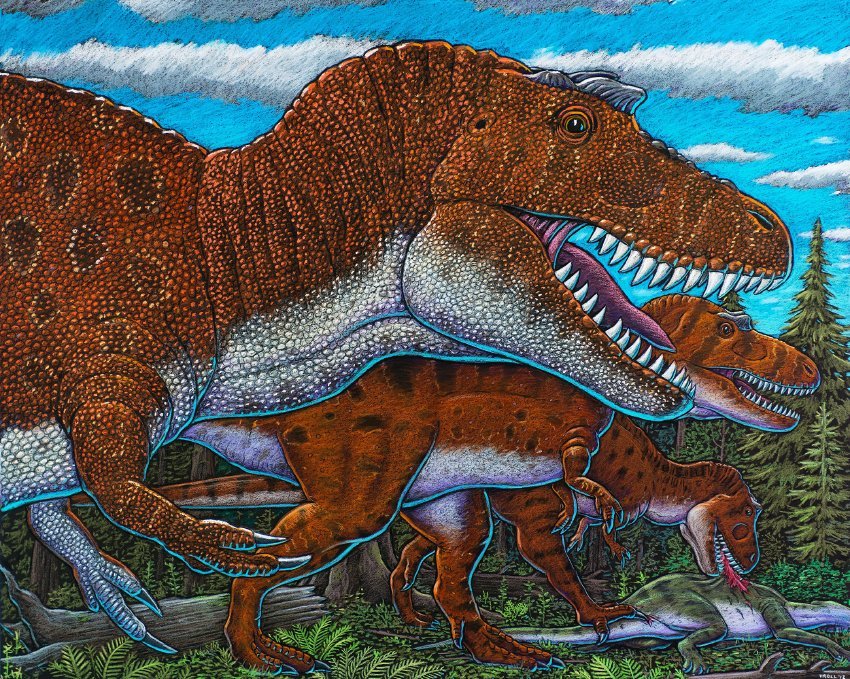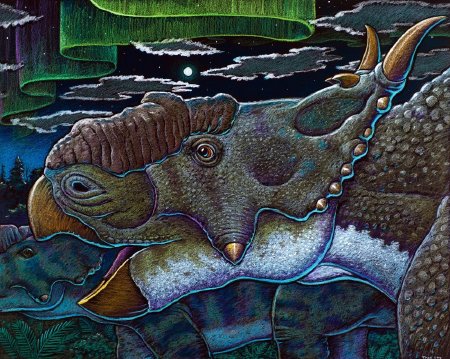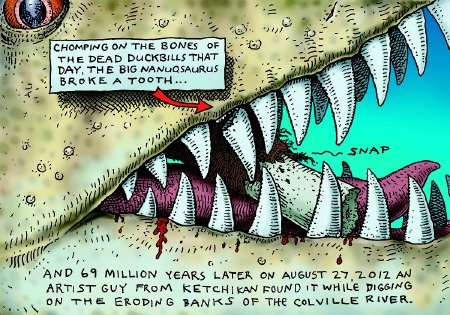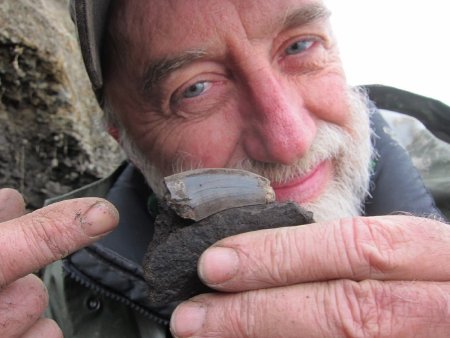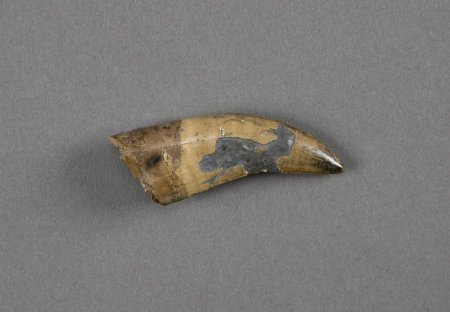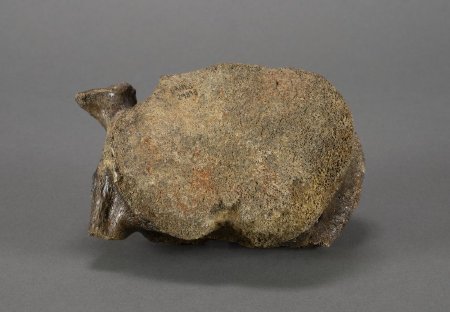Cruisin' the Fossil Coastline
The Dinosaurs of Alaska
During the Mesozoic Era (roughly 252 to 66 million years ago), a dense polar forest covered much of Alaska and it was teeming with all shapes, sizes and varieties of dinosaurs.
The idea that dinosaurs once lived and thrived in the Far North came as a surprise when dinosaur bones on Alaska's North Slope were discovered in the 1980s. The general understanding was that dinosaurs only lived in the more tropical regions of the world and wouldn't have survived in an environment with such dark and long polar winters.
The first dinosaur bones found in Alaska were discovered in 1961 by a geologist named Robert Liscomb, who came across them while scouting the Colville River for oil deposits. Liscomb died the following year and the bones sat in a warehouse for two decades. In 1983 the bones were sent to the United States Geological Survey in California, where they were recognized as duckbilled dinosaur bones, and the rush to find more was on.
A series of expeditions were organized in the mid 1980s, and teams of scientists began scouring the remote riverbanks of the far North. It was soon realized that Liscomb's discovery was a genuine "bone bed" full of thousands of duckbill dinosaur bones. The site was determined to be late Cretaceous in age, at 69 million years before present.
Alaska's first official dinosaur species was named Pachyrhinosaurus perotorum, a relative of the better-known, three-horned Triceratops. Another species, a carnivorous member of the infamous Tyrannosaur family, was identified and named Nanuqsaurus, or the "polar bear reptile". After careful analysis the Alaskan duckbill dinosaur species that Liscomb had first collected was identified and named Ugrunaaluk kuukpikensis, Iñupiaq for "ancient grazer of the Colville River."
The idea that dinosaurs once lived and thrived in the Far North came as a surprise when dinosaur bones on Alaska's North Slope were discovered in the 1980s. The general understanding was that dinosaurs only lived in the more tropical regions of the world and wouldn't have survived in an environment with such dark and long polar winters.
The first dinosaur bones found in Alaska were discovered in 1961 by a geologist named Robert Liscomb, who came across them while scouting the Colville River for oil deposits. Liscomb died the following year and the bones sat in a warehouse for two decades. In 1983 the bones were sent to the United States Geological Survey in California, where they were recognized as duckbilled dinosaur bones, and the rush to find more was on.
A series of expeditions were organized in the mid 1980s, and teams of scientists began scouring the remote riverbanks of the far North. It was soon realized that Liscomb's discovery was a genuine "bone bed" full of thousands of duckbill dinosaur bones. The site was determined to be late Cretaceous in age, at 69 million years before present.
Alaska's first official dinosaur species was named Pachyrhinosaurus perotorum, a relative of the better-known, three-horned Triceratops. Another species, a carnivorous member of the infamous Tyrannosaur family, was identified and named Nanuqsaurus, or the "polar bear reptile". After careful analysis the Alaskan duckbill dinosaur species that Liscomb had first collected was identified and named Ugrunaaluk kuukpikensis, Iñupiaq for "ancient grazer of the Colville River."

